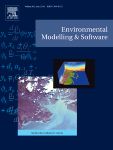Zhang et al., 2016
Fully-Coupled Hydrologic Processes for Modeling Landscape Evolution
Zhang, Y., R. Slingerland, and C. Duffy (2016)
Environmental Modelling & Software, 82:89-107
-
Calhoun, Christina, Shale Hills, COLLABORATOR
-
Shale Hills, INVESTIGATOR
-
Shale Hills, INVESTIGATOR
Abstract
Although current landscape evolution models can predict landscapes with specific concave-convex slopes, regolith thicknesses, drainage densities and relief, these models rarely include realistic groundwater and overland flows, and channel-hillslope interactions. To overcome the potential drawbacks, this study couples hydrologic processes with hillslope and channel sediment transport processes to form a new hydrologic-morphodynamic model (LE-PIHM) for regolith formation and landscape evolution. Two scenarios with and without groundwater flow are presented to demonstrate the importance of this coupling. Comparison of the steady state landforms indicates that hillslopes are steeper and relief is higher with groundwater flow. Unlike many previous studies which simplified the simulating of hydrological processes thereby neglecting the influence of landscape evolution on hydrology, this study emphasizes the importance of the co-evolution of the hydrological-mrophological system of a landscape. The sensitivity of the solution to mesh geometry is tested and it is shown that model simulations maintain the characteristic features of a landscape over a reasonable range of maximum triangle area and minimum interior angle. To predict long-term landscape change, a morphological acceleration technique is presented and a method for choosing an optimal morphological scale factor is introduced.
Citation
Zhang, Y., R. Slingerland, and C. Duffy (2016): Fully-Coupled Hydrologic Processes for Modeling Landscape Evolution. Environmental Modelling & Software, 82:89-107. DOI: 10.1016/j.envsoft.2016.04.014
 This Paper/Book acknowledges NSF CZO grant support.
This Paper/Book acknowledges NSF CZO grant support.
Explore Further




